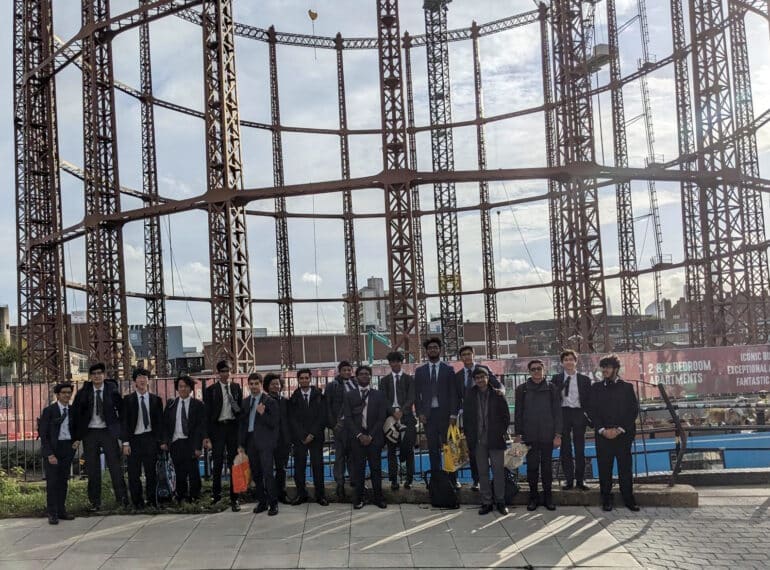
Year 12’s Technology students saw for themselves how start-up Batch.Works is using 3D printing as a true manufacturing technology by focusing on specialist design techniques and by automating its array of printers.
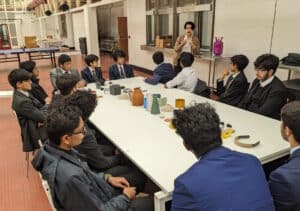 They learned how the company is pioneering a truly sustainable approach by recycling already-recycled materials to produce the plastic filament used by the printers.
They learned how the company is pioneering a truly sustainable approach by recycling already-recycled materials to produce the plastic filament used by the printers.
And the 17-strong group had the chance to present their own design projects to Batch.Works’s Chief Industrial Designer, Liam Hwang.
Head of Technology Michael Noonan said: “This visit provided the Year 12 cohort with unique and exciting insights into a company that is at the leading edge of sustainable design and manufacture, using heavily recycled materials to help its customers reduce their carbon footprint, and thus making the circular economy a reality.”
Now operating out of London Fields, Hackney, and from Amsterdam (and with plans to open a base in Rotterdam soon), Batch.Works was founded by designer Milo Mcloughlin-Greening and digital fabrication specialist Julien Vaissieres.
It first made waves in its sector during the pandemic when producing PPE for East London hospitals from its then-home in Bethnal Green.
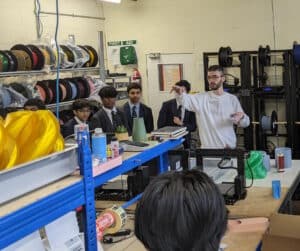 Recently awarded an innovation grant of £1.8m to create a network of manufacturing hubs that will use local recycled materials, Batch.Works is now investigating ‘urban mining’, the notion of turning waste streams into new products. It launched an equity crowdfunding campaign in September.
Recently awarded an innovation grant of £1.8m to create a network of manufacturing hubs that will use local recycled materials, Batch.Works is now investigating ‘urban mining’, the notion of turning waste streams into new products. It launched an equity crowdfunding campaign in September.
“Our students were absolutely thrilled to be told about the history, current works and future plans for the company by Dean Pankhurst, Design Co-ordinator at Batch Works,” said Mr Noonan.
“The company engages in specialist design for 3D printing, using the skills of industrial designers and project managers to enable a faster design-to-print lead time than most companies. Liam spoke about optimisation in design – how they alter designs to use ‘vase design’ principles so that no unnecessary bodies are created. As a result, unlike in other companies, at Batch.Works 3D printing can be used as a manufacturing technique, rather than only for making prototypes.
“Most impressive of all was that the company have themselves closed the loop of all the PLA filament they use, using recycling techniques on already recycled plastic: they are proud to use only 100% recycled materials in their work.”
During a tour, the boys first visited the company’s co-working room, where they saw technologies, collaborative techniques and methodologies similar to those which they use in their own product design work.
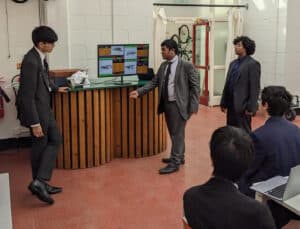 “Next, they were shown into the wildly impressive plant room by Dean and Liam,” said Mr Noonan. “The room contained 40 3D printers, some of which could print items as large as 1 metre square. Many of these were stacked on server cabinets, and the designers had impressively ‘hacked’ the G code [the most commonly used 3D-printing programming language] which drives the printers to turn them into automated 3D printing machines that could work around the clock. This means the rate at which the designers can prototype and manufacture is unrivalled.”
“Next, they were shown into the wildly impressive plant room by Dean and Liam,” said Mr Noonan. “The room contained 40 3D printers, some of which could print items as large as 1 metre square. Many of these were stacked on server cabinets, and the designers had impressively ‘hacked’ the G code [the most commonly used 3D-printing programming language] which drives the printers to turn them into automated 3D printing machines that could work around the clock. This means the rate at which the designers can prototype and manufacture is unrivalled.”
The boys were given an overview of the company’s projects and clients, from commercial giants such as M&S, to smaller medical companies and furniture businesses seeking sustainable design solutions. They were able to peruse prototypes that Batch.Works had created, including medical devices, personal hygiene products and headphones.
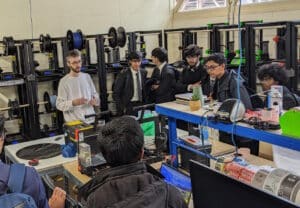 “It was at this point that the students began to ready themselves for their own presentations, as Liam had kindly agreed to take in the students’ presentations on their own recent vacuum cleaner projects. These, in fact, utilised many of the prototyping techniques with which he was familiar from his own studies in Product Design at the RCA and Central St Martins.”
“It was at this point that the students began to ready themselves for their own presentations, as Liam had kindly agreed to take in the students’ presentations on their own recent vacuum cleaner projects. These, in fact, utilised many of the prototyping techniques with which he was familiar from his own studies in Product Design at the RCA and Central St Martins.”
Each pupil had five minutes to present, followed by two or three minutes of questions and direct feedback from Liam on their designs.
During the presentations, all other students were linked into a scoresheet via MS Teams and could score their peers using a system of comparative assessment. Liam and Mr Noonan had casting votes. “Aniththan Kugathasan, Kiaron Lad and Aadish Praveen were crowned champions, earning a hearty round of applause for their superb presentation and an especially well-finished prototype.”
Liam told Mr Noonan: “The skills these students have in terms of presentation and CAD certification is very impressive – much closer to what we see from interns and graduates than from A-level students.”
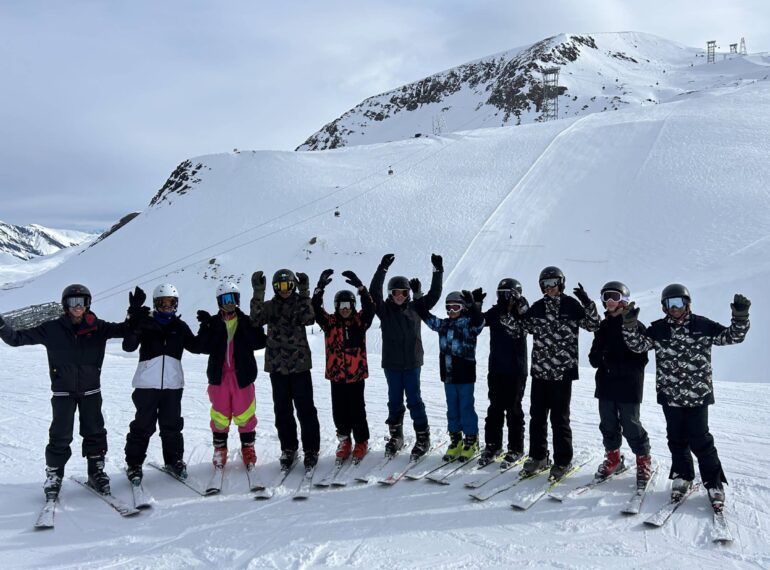

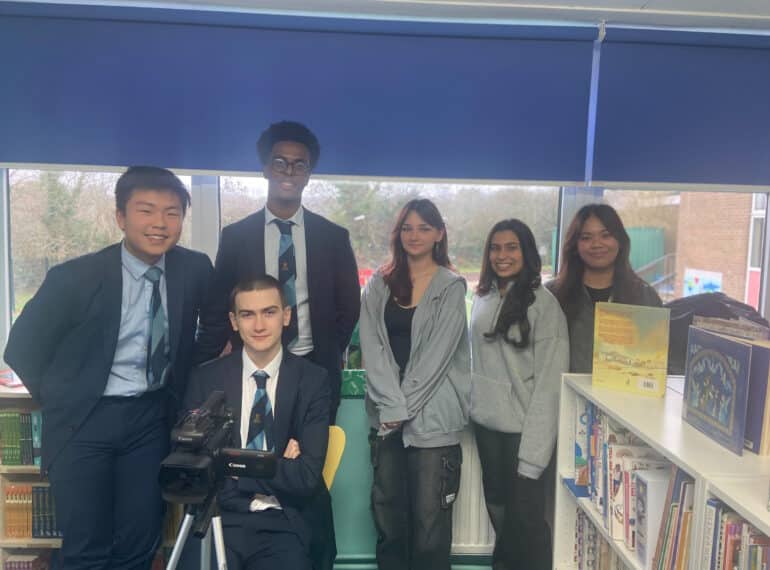
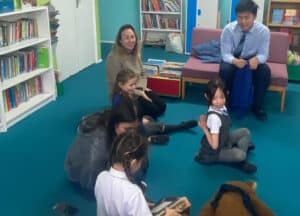 A team from the partnership – consisting of senior pupils from QE and Queen Elizabeth’s Girls’ School – visited QE’s near-neighbour, Christ Church Primary School. The filming was the latest stage in a project that the team have been working on for several months to create a promotional video aimed at encouraging prospective parents to sign up for Christ Church’s nursery.
A team from the partnership – consisting of senior pupils from QE and Queen Elizabeth’s Girls’ School – visited QE’s near-neighbour, Christ Church Primary School. The filming was the latest stage in a project that the team have been working on for several months to create a promotional video aimed at encouraging prospective parents to sign up for Christ Church’s nursery.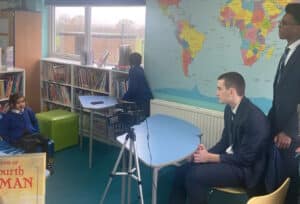 “We engaged with children, including those as young as nursery, guiding them to express the school motto [‘Through God’s love, we learn, aspire and achieve; we flourish’] and ethos. This collaborative effort not only enriched the visual narrative, but also provided an authentic perspective on the school’s values and identity.
“We engaged with children, including those as young as nursery, guiding them to express the school motto [‘Through God’s love, we learn, aspire and achieve; we flourish’] and ethos. This collaborative effort not only enriched the visual narrative, but also provided an authentic perspective on the school’s values and identity.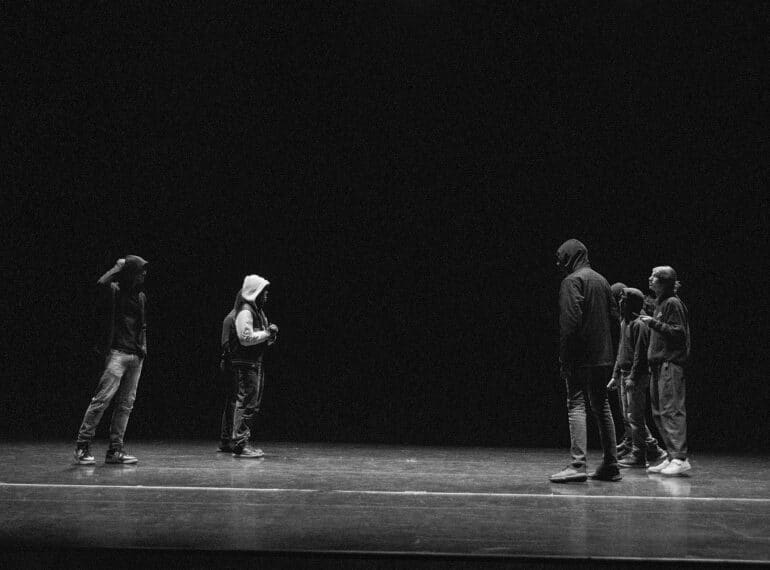

 They learned how the company is pioneering a truly sustainable approach by recycling already-recycled materials to produce the plastic filament used by the printers.
They learned how the company is pioneering a truly sustainable approach by recycling already-recycled materials to produce the plastic filament used by the printers. Recently awarded an innovation grant of £1.8m to create a network of manufacturing hubs that will use local recycled materials, Batch.Works is now investigating ‘urban mining’, the notion of turning waste streams into new products. It launched an equity crowdfunding campaign in September.
Recently awarded an innovation grant of £1.8m to create a network of manufacturing hubs that will use local recycled materials, Batch.Works is now investigating ‘urban mining’, the notion of turning waste streams into new products. It launched an equity crowdfunding campaign in September. “Next, they were shown into the wildly impressive plant room by Dean and Liam,” said Mr Noonan. “The room contained 40 3D printers, some of which could print items as large as 1 metre square. Many of these were stacked on server cabinets, and the designers had impressively ‘hacked’ the G code [the most commonly used 3D-printing programming language] which drives the printers to turn them into automated 3D printing machines that could work around the clock. This means the rate at which the designers can prototype and manufacture is unrivalled.”
“Next, they were shown into the wildly impressive plant room by Dean and Liam,” said Mr Noonan. “The room contained 40 3D printers, some of which could print items as large as 1 metre square. Many of these were stacked on server cabinets, and the designers had impressively ‘hacked’ the G code [the most commonly used 3D-printing programming language] which drives the printers to turn them into automated 3D printing machines that could work around the clock. This means the rate at which the designers can prototype and manufacture is unrivalled.” “It was at this point that the students began to ready themselves for their own presentations, as Liam had kindly agreed to take in the students’ presentations on their own recent vacuum cleaner projects. These, in fact, utilised many of the prototyping techniques with which he was familiar from his own studies in Product Design at the RCA and Central St Martins.”
“It was at this point that the students began to ready themselves for their own presentations, as Liam had kindly agreed to take in the students’ presentations on their own recent vacuum cleaner projects. These, in fact, utilised many of the prototyping techniques with which he was familiar from his own studies in Product Design at the RCA and Central St Martins.”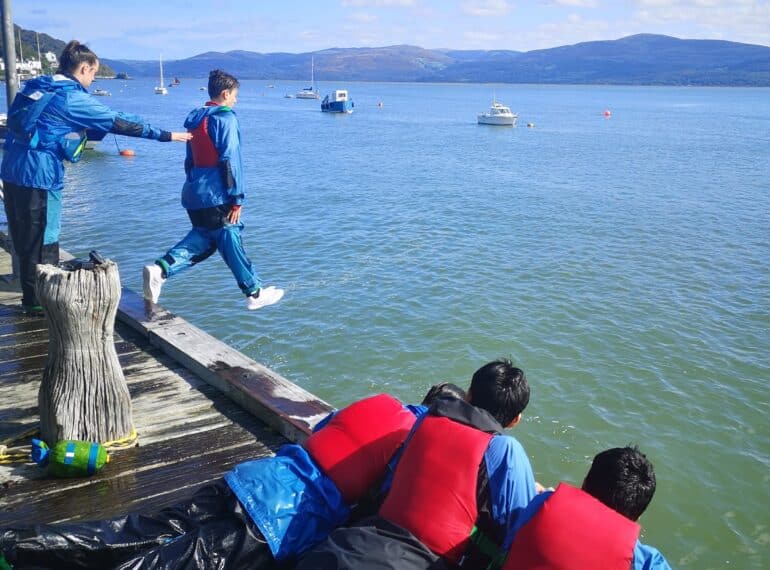
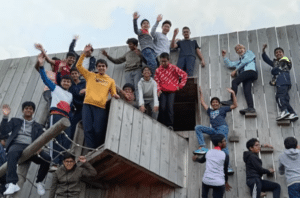 First, 72 Year 10 pupils headed off to Wales for a three-day weekend with the Outward Bound Trust and then all of Year 7 and Year 9 made day trips to the Stubbers Adventure Centre in Essex.
First, 72 Year 10 pupils headed off to Wales for a three-day weekend with the Outward Bound Trust and then all of Year 7 and Year 9 made day trips to the Stubbers Adventure Centre in Essex.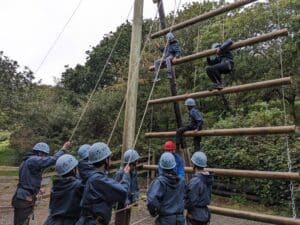 During their long weekend on the Welsh coast, as well as the gorge-walking, Tuhin and his peers experienced canoeing, raft-building and horizontal rope climbing.
During their long weekend on the Welsh coast, as well as the gorge-walking, Tuhin and his peers experienced canoeing, raft-building and horizontal rope climbing.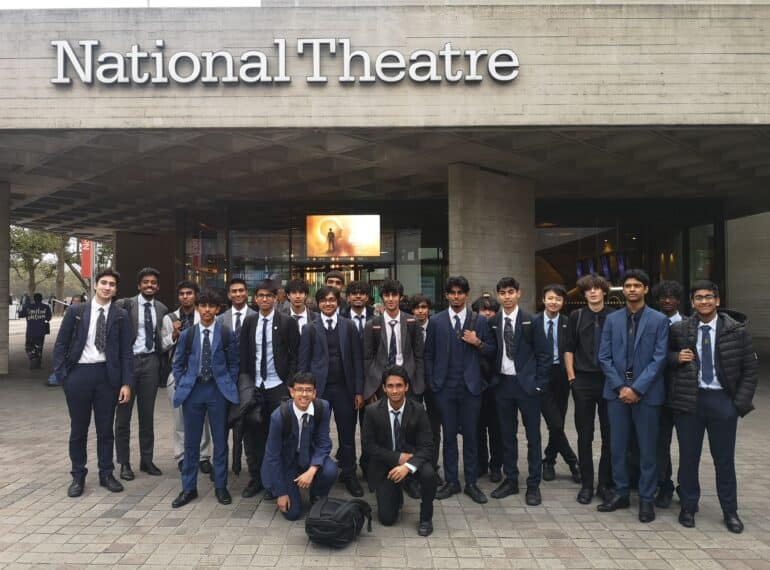
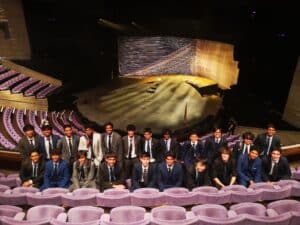 Twenty-two Year 12 boys and their teachers went on the History department trip to the National Theatre to see The Father and the Assassin.
Twenty-two Year 12 boys and their teachers went on the History department trip to the National Theatre to see The Father and the Assassin.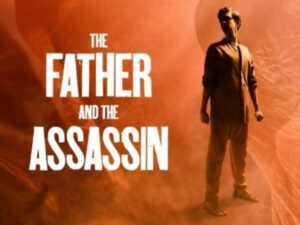 Regardless of their background, the visit enhanced all the boys’ understanding of Indian independence, showing how competing visions of a post-colonial India clashed, Mr Haswell added. They also appreciated the unique power of theatre to bring such ideas to life.
Regardless of their background, the visit enhanced all the boys’ understanding of Indian independence, showing how competing visions of a post-colonial India clashed, Mr Haswell added. They also appreciated the unique power of theatre to bring such ideas to life.